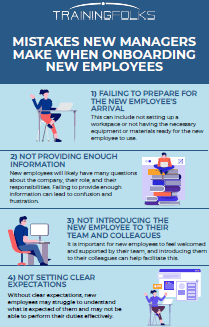Onboarding Strategy for New Employees:
Approach to Talent Integration

For organizations undergoing workforce expansion, restructuring, or rapid growth, employee onboarding is more than just an introduction—it’s a critical business function that directly impacts retention, engagement, and productivity. Without a structured approach, new hires can struggle to adapt, leading to early turnover, disengagement, and lost productivity.
A well-executed onboarding process ensures that employees integrate quickly, understand expectations, and contribute to business objectives from day one. Companies that prioritize onboarding as a business strategy see stronger workforce commitment, faster productivity, and reduced hiring costs.
Understanding Employee Onboarding
Employee onboarding is the structured process of integrating new hires into an organization, equipping them with the knowledge, skills, and tools they need to be successful. This process can last from a few days to several months, depending on the role and company structure.
The goal of onboarding is to shorten the adjustment period, ensure employees feel valued, and provide a clear roadmap for success. Companies that take a strategic approach to onboarding gain a significant competitive advantage in talent retention and workforce performance.
The Advantages of Effective Employee Onboarding
Organizations that invest in a structured onboarding program experience measurable business benefits, including:
- Stronger Workforce Commitment – Employees who feel supported and aligned with company goals are more engaged, motivated, and loyal.
- Accelerated Time to Productivity – A structured onboarding process ensures new hires can contribute meaningfully within weeks instead of months.
- Reduced Turnover Costs – A well-executed onboarding program improves new hire retention by up to 82%, significantly reducing the cost of turnover and rehiring.
- Scalability & Consistency – A standardized onboarding process ensures every employee receives the same high-quality introduction to company values, policies, and expectations.
- Stronger Manager-Employee Relationships – Early engagement with leadership fosters clear communication, trust, and long-term collaboration.
- Compliance and Policy Adherence – Onboarding establishes a solid foundation for understanding company policies, legal guidelines, and industry compliance requirements.
- Increased Confidence and Engagement – A structured onboarding experience eliminates uncertainty, making employees feel valued, prepared, and eager to contribute.
When Building an Onboarding Strategy for New Employees, Consider These Key Components
- Pre-Boarding Activities – Engagement starts before day one. Sending welcome emails, company insights, and a structured agenda reduces uncertainty and sets clear expectations.
- First Day Agenda – Ensure a seamless first-day experience by organizing team introductions, company overviews, and work environment orientations.
- Role-Specific Training – Generic onboarding sessions aren’t enough. Providing tailored, role-based training helps new hires quickly understand their responsibilities.
- Mentorship Programs – Assigning an onboarding buddy or mentor helps employees integrate faster, providing a go-to resource for guidance and questions.
- Regular Check-Ins and Feedback – Managers and HR should schedule ongoing check-ins to address concerns, reinforce learning, and sustain engagement.
- Long-Term Integration Strategies – Onboarding doesn’t stop after 30 days. Organizations should incorporate continuous learning, professional development, and culture-building initiatives.
A strategic onboarding process ensures new hires transition smoothly into their roles, increasing retention and long-term workforce stability.
Challenges in Employee Onboarding (and How to Overcome Them)
Many organizations struggle with onboarding due to inconsistent processes, lack of leadership buy-in, and poor engagement strategies. Here’s how to solve the most common challenges:
- Inconsistent Onboarding Across Departments → Solution: Standardize onboarding with digital tools, training checklists, and company-wide onboarding frameworks.
- Lack of Leadership Buy-In → Solution: Demonstrate the ROI of onboarding through retention metrics, engagement scores, and employee performance tracking.
- Overloading New Hires with Information → Solution: Structure onboarding into phases using a 30-60-90 day model, delivering key information gradually.
- Failure to Measure Effectiveness → Solution: Use surveys, new hire feedback, and performance reviews to refine and improve the onboarding experience.
By addressing these challenges, organizations can build an onboarding experience that is scalable, effective, and aligned with business goals.
Measuring the Success of Onboarding Programs
To determine whether an employee onboarding program is delivering results, companies should track key performance indicators (KPIs), including:
- Time-to-Productivity – How quickly new hires reach expected performance levels.
- New Hire Retention Rates – The percentage of employees who remain with the company after 6-12 months.
- Employee Engagement Scores – Surveys that measure new hires’ job satisfaction, motivation, and cultural alignment.
- Manager & Peer Feedback – Direct input on how well new employees integrate into their teams and contribute to overall performance.
Regularly evaluating these metrics ensures continuous improvement and optimization of the onboarding process.
The Role of Technology in Employee Onboarding
Technology has transformed onboarding into an efficient, engaging, and scalable process. Organizations can leverage:
- Online Portals & eLearning Modules – Provide self-paced learning resources that help new hires get up to speed quickly.
- Digital Checklists & Automated Workflows – Streamline administrative tasks with automated reminders, forms, and progress tracking.
- Virtual Reality & Gamification – Create immersive onboarding experiences that enhance learning and engagement.
- AI-Driven Onboarding Assistants – Use chatbots and AI tools to provide instant answers and real-time guidance, reducing HR workload.
Implementing the right tools ensures new hires feel supported and engaged from day one, resulting in a smoother, more effective onboarding process.
Onboarding as a Business Growth Strategy
Organizations that prioritize onboarding as a strategic investment—rather than just an HR requirement—see measurable improvements in employee retention, engagement, and productivity.
With evolving workforce needs and increasing competition for top talent, a strong onboarding program is no longer optional—it is a competitive advantage.
By implementing a structured, engaging, and technology-driven onboarding strategy, businesses can accelerate new hire success, strengthen workforce stability, and drive long-term growth.
Now is the time to evaluate and enhance your onboarding program to ensure your employees and organization thrive.
Get our FREE Infographic
Mistakes New Managers Make When Onboarding New Employees


